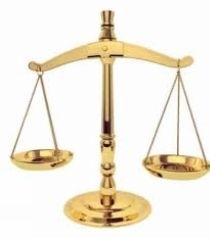107. Land Patent
A Land Patent Is the Highest Form of Title. This page will show you how to acquire a Land Patent.
Steps to secure a Land Patent:
We present the following in the hope that you will educate yourself with the truth and prepare yourself to stand, as our forefathers did, and as the founding fathers of this nation did; with your Land, Liberty and Rights intact.
The Land Patent is the Title to land (and to the property appurtenant to the land when the land patent is issued). By definition a Land Patent is the only form of proof of absolute title to land in the United States of America. “A patent is the highest evidence of title and is conclusive as against the government and all claiming under junior patents or titles” U.S. v. Stone 2 US 525. The patented “grant of land is a public law standing on the statute books of the State, and is notice to every subsequent purchaser under any conflicting sale made afterward.” Wineman v. Gastrell 2 U.S. App. 581. “State statutes that give less authoritative ownership of title than the patent can not even be brought into federal court” Langdon v. Sherwood, 124 U.S. 74, 81. Land patents are granted to the named party and to their heirs and assigns forever. Therefore, to secure ownership of land you must have a proper chain of title secured to your acceptance of a properly assigned underlying land patent, or you could lose your land in a land contest. The following steps are the steps we follow to secure the proper documents to accomplish this. We use our copyrighted forms which we cannot publish here because there are so many unscrupulous people that would use these forms incorrectly. These forms are only available from Team Law directly. With the exception of our filling out said copyrighted forms the following steps are the steps we would follow to perfect our Title with our acceptance of the Land Patent related to it:
First, as a landowner we must have evidence of our right to the land; that is to say: a Warranty Deed, a well supported Quitclaim Deed, documented Assignment, Inheritance, etc. In any land rights battle, the complete chain of title is necessary to win; so, we always secure the entire chain of documents from the patent (the Title itself) to the present; such a chain of title perfects the Title for our own records.
To secure Team Law’s documentation we do not need the complete Title (abstract, etc.), we only need to see certified proof of the most recent Deeds that grant the Land to you. We need to see a certified copy of your Warranty Deed (if your right to the land was acquired by a Quitclaim Deed we need to see a certified copy of it and of every other transfer document back to a Warranty Deed).
Second, find the land description on your right to the land (your deed) and get it into land patent format.
In the original 13 states, land descriptions are usually made by describing landmarks with ‘meets and bounds’, which is where a description starts at a known point then describes how far to go in each direction until the body of the land is described. That method is difficult to deal with over time, because landmarks can change, move and or disappear. Since the Constitutional Republic has been formed virtually the rest of the country was mapped in Section, Township, and Range format (hereafter “STRf”). If the legal description of your land on your right to the land documents (hereafter “Warranty Deed”) is not in STRf, then you need to get it into that format to find the proper Land Patent for your Land. To do that you need to trace the legal description on your Warranty Deed back to STRf. For example, if your Deed says, “Lot 3 of the Bryerton Subdivision as recorded in the Dexter County Land Records”, then you go to the Dexter County Clerk and Recorder’s office and find the original copy of the Subdivision’s plat map. Find your lot and locate the Section, Township, and Range that includes your lot. Get a certified copy of the County plat map of the subdivision your land is located in (we always get two certified copies of everything, then we keep the documents in two separate places for security’s sake); you’ll especially need the part that legally describes the land. That part is called: “the legal”, and it almost always lists the Land description in STRf. While you’re there it won’t hurt to get a couple certified copies of your Warranty Deed from their records (if you don’t already have them). If your land records describe your land in ‘meets and bounds’, you’ll need to be able to prove the land described on your Deed is within the land described on the respective land patent—that can be done with certified official Plat Map(s) or you can contact a Certified Surveyor familiar with creating official plat maps. If you have difficulty with this you may contact Team Law directly by logging onto Team Law’s Forum and send a Private Message to Admin requesting assistance. If you have, a Trust Deed and no Warranty Deed, you will also want to contact Team Law for additional help through our Online Forum.
Third, with the description of your Land in STRf, you’re ready to go acquire a copy of the appropriate Land Patent for your Land. This is done by taking the legal description of your Land, in STRf, to the Bureau of Land Management (BLM) and asking them (in their Land Patent records office) for a Certified copy of the Land Patent for the land represented by your Land description including, Section, Township, and Range. It’s a good idea to get at least two certified copies of the appropriate Patent and a copy of the "Patent Plat map" for the particular Township your land is in.











